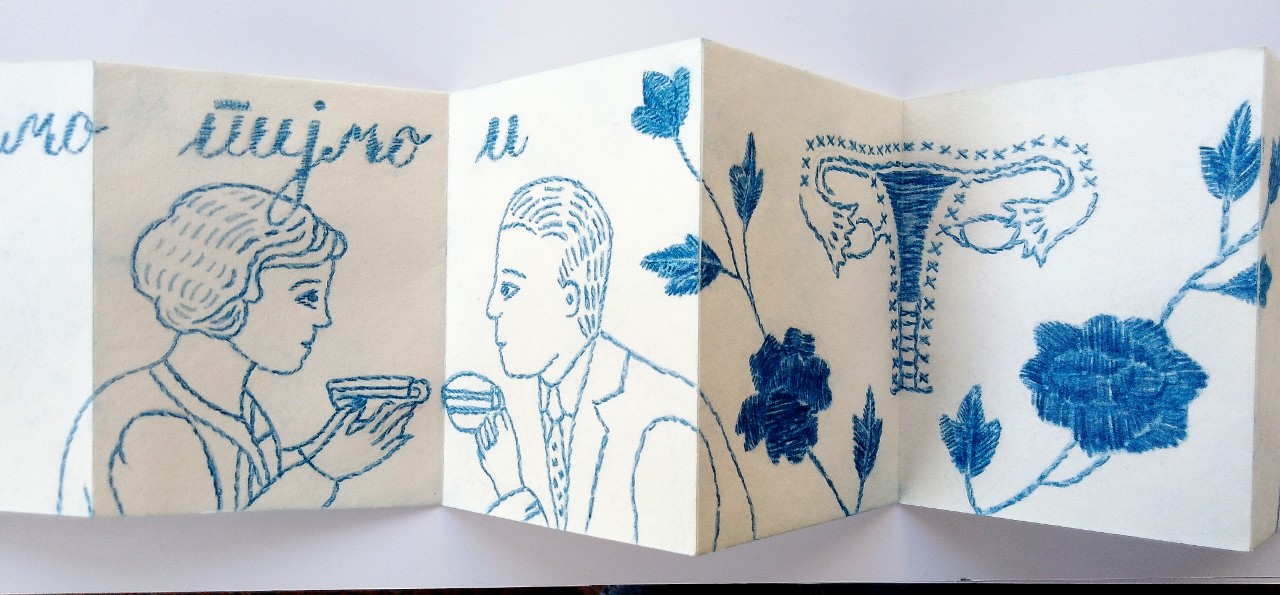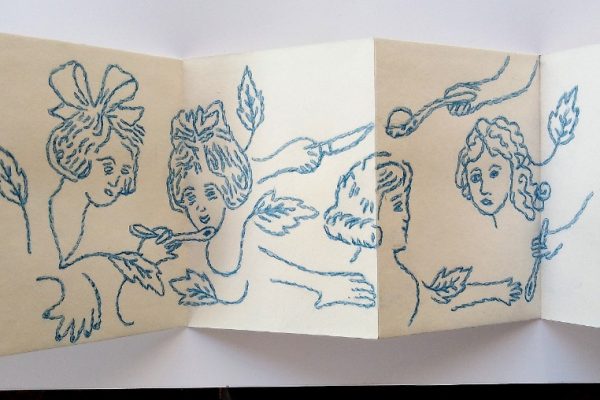- February 16, 2022
Kuvarica in the Expanded Field / Cross-sections of Reproductive Labor (2018-2019)
The body of work I have been developing since 2018. deals with the traditional language of embroidery made by women from the Balkans between the 19th and early 20th century. Through the process of drawing I started simulating their stitching in an attempt to consider how political circumstances, educational policies and gender readings have changed for women in my region in the past 100-150 years. The women of the Balkans share a history of resilience that goes beyond borders and political tensions. It is their more subtle work, the efforts to keep communities together, to take care of what’s close to home, as well as more radical approaches like anti-war initiatives, which are often overlooked in daily political discourse.
I started drawing the different types of stitches as a sort of homage to their virtuosity, but also as a reminder of the journey it took to get from where they were to the moment in which I could actually devote my life to studying fine arts. The traditional form I was referencing, known as kuvarica (from Serb.= cook, housewife) – a type of traditional embroidered wall hanging which was brought to the Balkans from Western and Central Europe through Austro-Hungarian influence, was meant to represent an idealized view of domestic life and a representative image of proper, wifely behavior. Usually these were made to keep the author occupied and to decorate the kitchen or other kind of intimate setting where women resided, along with the practical aspect of protecting the walls from getting dirty. The images depicted primarily women engaged in housework and childcare, with educational messages meant to stimulate socially acceptable behavior, but they often included limericks and humor. The figures represented in the kuvarica, though skillfully stitched, were usually naive in terms of anatomy and drawing. In my works, I juxtaposed this visual language of misunderstanding to either political statements / misunderstandings taken from daily media, or images taken from female anatomy textbooks, aiming to question the position of female artists/creators in the Balkans today as opposed to earlier in our history. Questions of the female gaze and creativity, anatomy, and the reproductive politics of the region were central aspects of the drawings in the series Kuvarica In The
Expanded Field and Cross-sections of Reproductive Labor.

